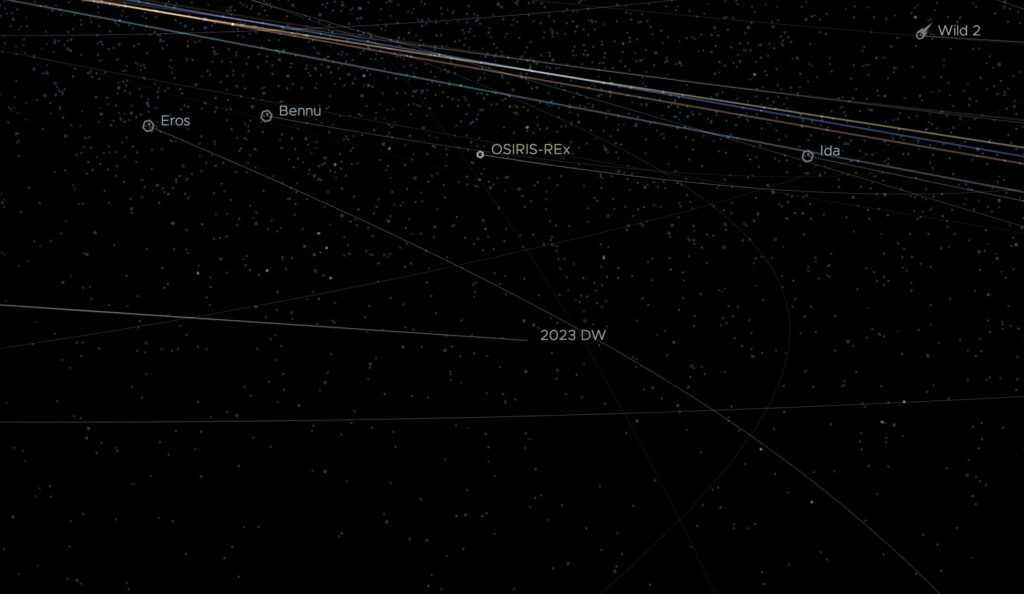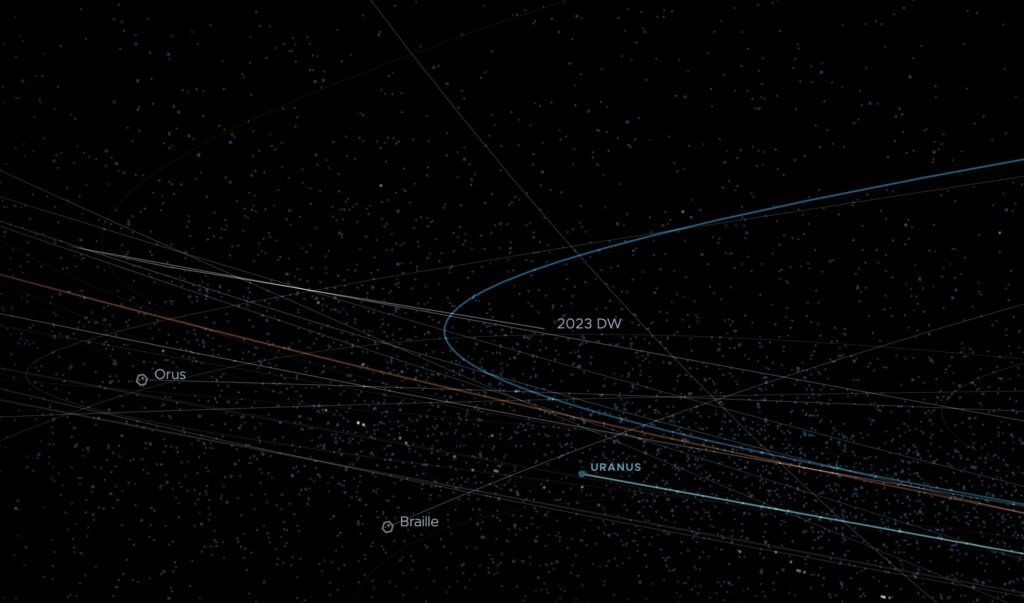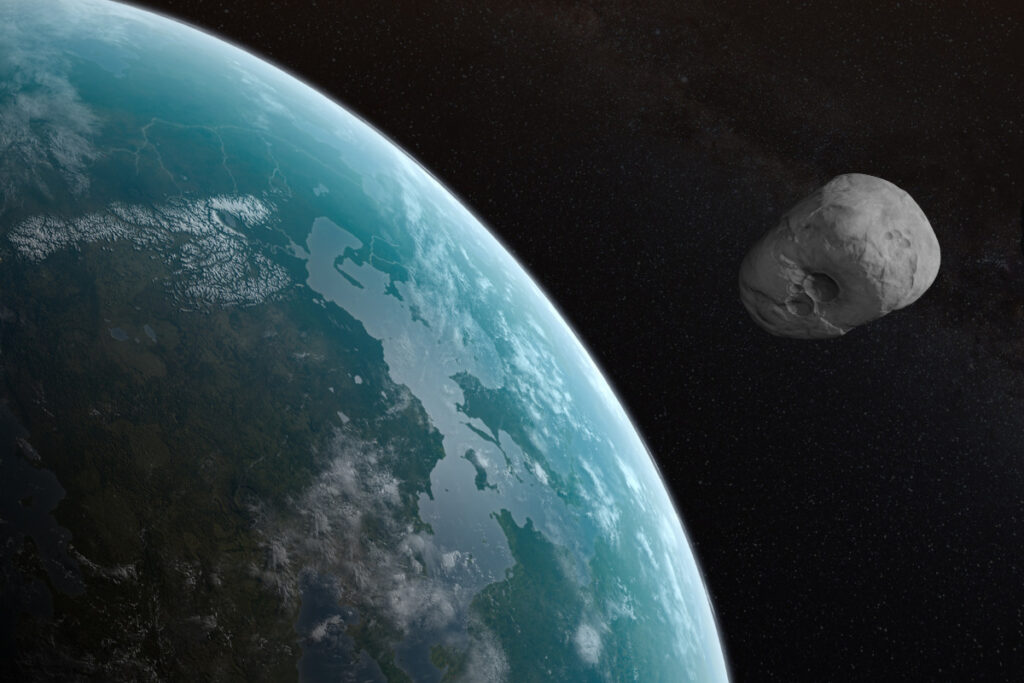In 2046, a part of the Earth may be facing a cataclysmic event, depending on how things shake out in the next 23 years. Asteroid 2023 DW (dubbed the Valentine’s asteroid) is a 50-meter-in-diameter asteroid that could hit the Earth on Valentine’s Day 2046. If you want to follow its trajectory starting today, there’s a way to know where it is live in real time. In fact, there are two trackers you can use, so be sure and read both sections of the article below so you don’t miss a thing.
NASA Has a Real-Time Live Tracker
NASA has provided a real-time tracker that gives us an impressive way to know exactly where the 2023 DW asteroid is at any given point in time. You can load the asteroid tracker from this link. Earlier in the week, its estimated diameter was 50.3 meters, but now that’s grown to 50.44. The more we study this asteroid, the more we learn about it.
The tracker has some impressive features, including showing the asteroid’s current distance from Earth (24,214,048 km as of this article’s first publication.) You can also see its current velocity relative to the sun, its orbital period, eccentricity, perihelion, aphelion, and inclination.
Of course, there’s also the most important information: the Close Approach tab. It will tell you when the object’s closest approach to earth is estimated to happen. It’s currently February 14, 2046.
The tracker also lets you zoom in to the “see” the asteroid up close or zoom out to get a better picture of where it is in the solar system. Here’s a zoomed-out look:

Here’s another look.

The asteroid was first discovered on February 26, Science Alert noted, and it has a solar orbit of 271 days. The name 2023 DW is based on when it was discovered (2023 indicates the year, and D indicates the second half of February.)
Sky Live Also Has Live Trackers
Sky Live has its own real-time information page on 2023 DW here, which notes that it’s currently in the Hydra constellation. The page notes that it’s only visible through “long exposure photography.” The page includes a chart of where it is in the sky right now. A more detailed live map is here.
You can find out exactly how far it is from Earth at any time here.
The Asteroid’s Risk Has Recently Been Lowered
Interestingly, 2023DW’s hazard ranking keeps changing. The Palermo scale risk is listed on ESA’s website here. On March 14, 2023 DW’s risk was -2.00 and it was -2.17 on March 10. (The closer to 0 the risk gets, the higher the risk is.) But on March 16, that risk was reassessed and lowered to -3.13. The Torino Scale lowered it from 1 back to 0. It’s unclear if that will change.
To find out how much damage a 50-meter asteroid could do to Earth if it hit, check out our story here.
When Are the Next Asteroids Coming Close to Earth?
NASA’s tracker also has a setting to let you see the next five closest approaches to Earth.
Up next is 2023 EY on March 17, 2023, at 6:34 a.m. Central, passing 239,357 km away with a 17.2-meter diameter.
Then after that, there’s 2018 UQ1, which will be passing 4,104,966 km away on March 17 at 11:05 a.m. This one is 142.7 meters in diameter.
After that is 2023 ES1, passing 1,962,724 km away on March 17 at 6:51 p.m. But this one is just 9.6 meters in size.
Number four on the list is 2023 EZ, passing 6,233,744 kilometers away on March 18 at 12:33 p.m. Central. It’s 19.1 meters in size.
Want to chat about all things post-apocalyptic? Join our Discord server here. You can also follow us by email here, on Facebook, or Twitter.

